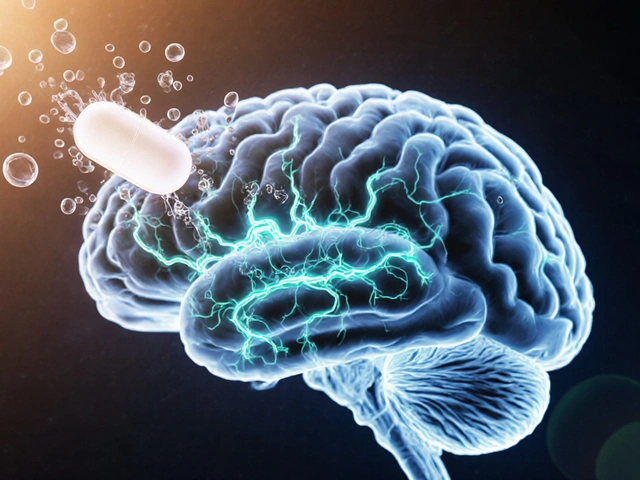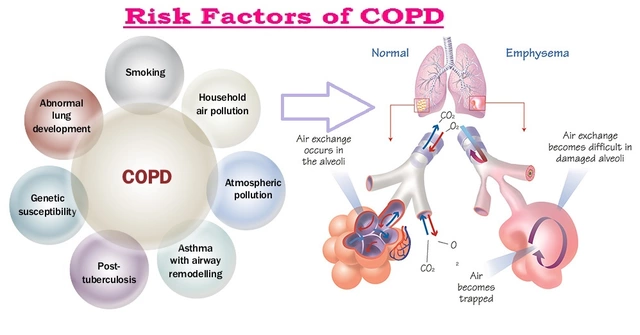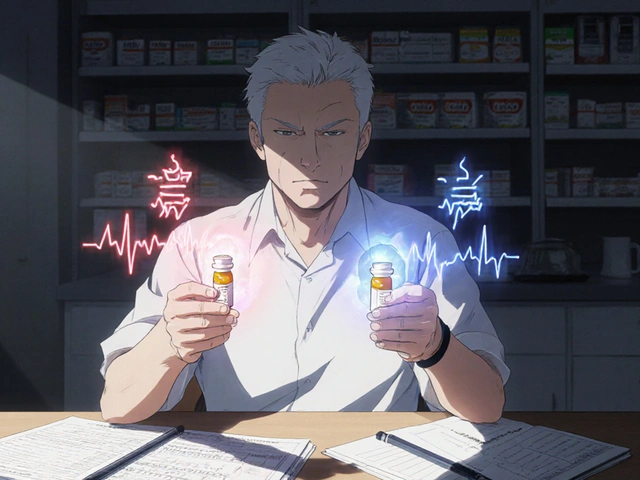
Parasite Insight Quiz
1. Which parasite model provides immunomodulatory proteins for anti‑inflammatory drug leads?
2. The ion‑pump inhibitor drug KAE609 was discovered from which parasite?
3. Which helminth‑derived protein contains phosphorylcholine and reduces cytokine storms?
Parasites are organisms that live on or inside a host, extracting nutrients while often manipulating the host’s immune system. Their unique biochemistry and evolutionary adaptations make them natural laboratories for parasite drug discovery, offering clues for new medicines, vaccines, and immune‑modulating therapies.
Why Parasites Matter for Modern Medicine
Researchers have long treated parasites as foes, but over the past two decades they’ve become collaborators. Their complex life cycles force them to evolve sophisticated proteins that can evade or redirect host defenses. Those same proteins can be repurposed as drug targets, vaccine antigens, or even therapeutic agents for diseases unrelated to infection.
- Evolutionary pressure produces high‑affinity ligands for host receptors.
- Parasite enzymes often differ enough from human counterparts to allow selective inhibition.
- Some parasites secrete molecules that actively suppress inflammation, useful for autoimmune disorders.
Key Parasite Models in Drug and Vaccine Research
Three organisms dominate the landscape because they are easy to culture, have well‑characterized genomes, and cause major human disease.
Schistosoma mansoni is a blood fluke that causes schistosomiasis, infecting over 200million people worldwide. Its tegument (outer surface) produces proteins that modulate host immune responses, a feature explored for anti‑inflammatory drug leads. Plasmodium falciparum is the most lethal malaria parasite, responsible for roughly 400,000 deaths per year. Its rapid replication and surface antigens have driven the design of next‑generation vaccines and novel antimalarial compounds. Toxoplasma gondii is a protozoan that infects warm‑blooded animals and can manipulate host behavior. Its ability to cross the blood‑brain barrier has inspired studies in neuro‑immunology and cancer immunotherapy.From Parasite to Vaccine: How Vaccine development Benefits
Traditional vaccine design relies on inactivated or attenuated pathogens. Parasite‑derived antigens provide a fresh source of highly conserved proteins that are less prone to mutation. For example, the RTS,S malaria vaccine uses the circumsporozoite protein from Plasmodium falciparum, achieving partial protection in African children.
Researchers are now engineering virus‑like particles that display parasite epitopes, boosting immune recognition without the risk of infection. Early trials with a Schistosoma antigen vaccine have shown a 45% reduction in egg burden among school‑aged children in Brazil.
Immunomodulation: Lessons from Helminths
Helminths, the broader group that includes flukes and roundworms, secrete a cocktail of molecules that dampen host inflammation. These secreted proteins-often called “parasite‑derived immunomodulators”-are being tested as treatments for Crohn’s disease, multiple sclerosis, and asthma.
- ES-62: a phosphorylcholine‑containing protein from the filarial worm Acanthocheilonema viteae that reduces cytokine storms in mouse models of rheumatoid arthritis.
- Omega‑1: a ribonuclease from Schistosoma mansoni that drives regulatory T‑cell expansion, currently in phase I trials for ulcerative colitis.
These examples illustrate the concept of Immunomodulation-using parasite‑originated compounds to rebalance a hyperactive immune system.

Case Studies: Real‑World Treatments Inspired by Parasites
1. Anti‑malaria drug discovery: The compound KAE609 (cipargamin) was identified by screening Plasmodium falciparum ion pumps. It now sits in phase II trials with a novel mechanism targeting parasite sodium homeostasis.
2. Cancer immunotherapy: Researchers engineered Toxoplasma gondii to express tumor‑associated antigens. In mouse models, the modified parasite acted as a live vaccine, stimulating CD8+ T‑cells that eliminated melanoma lesions.
3. Anti‑inflammatory drugs: The helminth‑derived peptide AIP‑1, derived from Helminths, showed a 60% decrease in joint swelling in a rat model of arthritis, paving the way for a first‑in‑class biologic.
Emerging Technologies: Editing Parasites for Better Insights
CRISPR‑Cas9 has been adapted to edit the genomes of Schistosoma mansoni and Plasmodium falciparum. Precise knock‑outs allow scientists to pinpoint essential genes, accelerating target validation for drug pipelines.
Synthetic biology now lets researchers assemble parasite‑derived pathways in bacterial hosts, producing therapeutic proteins at scale without maintaining the full parasite life cycle.
Challenges and Future Directions
Despite the promise, several hurdles remain:
- Complex life cycles: Replicating multiple stages in the lab can be time‑consuming.
- Safety concerns: Translating live‑parasite approaches to humans requires rigorous containment.
- Regulatory pathways: Authorities are still forming guidelines for parasite‑derived biologics.
Future research aims to create “designer parasites” that retain therapeutic molecules while being unable to cause disease, a concept already demonstrated in attenuated Toxoplasma gondii strains.
Quick Comparison of Leading Parasite Models
| Model | Primary Disease Target | Genome Size (Mb) | Culture Feasibility | Key Therapeutic Insight |
|---|---|---|---|---|
| Schistosoma mansoni | Schistosomiasis | 364 | Requires intermediate snail host; adult worms maintained in rodents | Immunomodulatory proteins for anti‑inflammatory drugs |
| Plasmodium falciparum | Malaria | 23 | In‑vitro erythrocyte culture possible | Ion‑pump inhibitors; vaccine antigens |
| Toxoplasma gondii | Toxoplasmosis, Neuro‑immune research | 65 | Easy fibroblast culture; mouse infection models | Vectors for cancer antigen delivery; blood‑brain barrier studies |
Practical Steps for Researchers Entering Parasite‑Driven Drug Discovery
- Identify a disease gap where parasite biology offers a unique angle (e.g., inflammation, immune evasion).
- Select a model organism with available genetic tools (CRISPR‑Cas9 protocols are mature for Plasmodium falciparum and Schistosoma mansoni).
- Establish a high‑throughput screening assay using parasite‑derived proteins or whole‑organism phenotypes.
- Validate hits in mammalian cell models and assess safety profiles early.
- Engage regulatory experts familiar with biologics derived from non‑human organisms.

Frequently Asked Questions
Can parasites really be used to treat human diseases?
Yes. Parasite‑derived molecules such as helminth secreted proteins have shown anti‑inflammatory effects in clinical trials, and parasite antigens are central to several vaccine candidates, including malaria and schistosomiasis vaccines.
What makes parasite proteins good drug targets?
Parasite proteins often evolve to bind host receptors with high specificity, creating pockets that differ from human proteins. This allows researchers to design inhibitors that block the parasite without harming the host.
Are there safety concerns with using live parasites in therapy?
Live‑parasite therapies must be heavily attenuated or confined to non‑replicating stages. Regulatory agencies require rigorous pre‑clinical testing to ensure the organism cannot revert to a pathogenic form.
How does CRISPR help in parasite research?
CRISPR allows precise gene knock‑outs or insertions in parasites like Schistosoma mansoni and Plasmodium falciparum. Scientists can test which genes are essential for survival, accelerating the validation of drug targets.
What future directions look most promising?
Designer, non‑pathogenic parasites that deliver therapeutic proteins, combined with synthetic biology platforms for mass production, are poised to transform both infectious disease vaccines and chronic‑illness treatments.





Rebecca Bissett
September 23, 2025 AT 14:14Wow, the way parasites have been turned into medical superheroes is mind‑blowing! I never imagined that a blood fluke could whisper sweet anti‑inflammatory signals to our immune system! The discovery that Schistosoma mansoni releases immunomodulatory proteins is a game‑changer for treating chronic inflammation! And who could forget the ion‑pump inhibitor KAE609, a direct gift from Plasmodium falciparum's own biology! These breakthroughs prove that nature's darkest foes can become our brightest allies!
Think about it: a parasite that once caused misery now offers a pathway to reduce cytokine storms! The helminth protein ES‑62, with its phosphorylcholine moiety, actually calms raging immune responses! Scientists are now harnessing Omega‑1 to expand regulatory T‑cells, and the results are nothing short of spectacular! Even cancer research is borrowing tricks from Toxoplasma gondii to train the immune system against tumors!
CRISPR editing of these organisms unlocks the secrets hidden in their genomes, letting us pinpoint drug targets with surgical precision! Synthetic biology can now produce these parasite‑derived pathways in bacteria, making scalable therapeutics a real possibility! Of course, the hurdles remain-complex life cycles, safety concerns, and regulatory gray zones! But imagine a future where designer parasites deliver therapeutic proteins without ever causing disease! That vision fuels my excitement every time I read about these advances! We are standing on the brink of a paradigm shift, and I cannot wait to see where this brave new frontier leads us!!!
Michael Dion
September 24, 2025 AT 18:00meh just another old story
Trina Smith
September 25, 2025 AT 21:47Reading about parasites reshaping drug discovery feels like watching nature rewrite its own rulebook. The fact that a worm can produce ES‑62, a molecule that tempers inflammation, is both humbling and inspiring. I appreciate how researchers are turning a problem into a solution, especially when it could help patients with autoimmune disorders. The use of CRISPR to dissect parasite genomes adds a layer of precision that was unimaginable a decade ago. It's also fascinating that synthetic biology can move these pathways into bacteria, potentially democratizing access to new therapeutics. While challenges remain-like ensuring safety and navigating regulatory frameworks-the potential benefits outweigh the risks. 🙏🌱
josh Furley
September 27, 2025 AT 01:34Honestly, this hype about parasite‑derived drugs is a bit overblown-sure, the biology is cool, but translating it into real‑world treatments is riddled with unknowns. The jargon about immunomodulators and CRISPR sounds impressive, yet many of these compounds never clear Phase I. 🤔
Jacob Smith
September 28, 2025 AT 05:20Hey, don't let the setbacks dissuade you! Even if the path is tough, the science keeps moving forward, and every failed trial teaches us something new. Keep the faith, stay curious, and remember: every breakthrough started as a crazy idea. Let's keep pushin' the boundaries together! 💪
Chris Atchot
September 29, 2025 AT 09:07Actually, the sentiment is commendable, yet we should remember to maintain precise language when discussing clinical progress; for instance, "failed trials" should be described as "did not achieve primary endpoints". Moreover, encouraging perseverance is valuable, provided we also acknowledge the rigorous standards required for regulatory approval. Keep up the positive energy, and let's continue to advocate for scientifically robust approaches. 😊